 |  |
By Greg Niemann
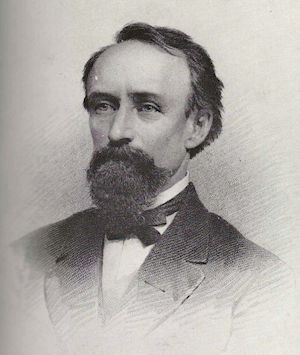
Noted travel journalist J. Ross Browne, author of Explorations in Lower California, (1868) not only led an early expedition into Baja California, but was one of the most colorful and ubiquitous adventurers of the mid-nineteenth century.
Born John Ross Browne in 1821 in Dublin, Ireland, he relocated to the U.S. and became an American traveler, artist, writer, as well as a U.S. government agent, and ultimately Ambassador to China.
Browne moved to California in 1849 during the California Gold Rush, working in various jobs for the U. S. government: as an agent for the Treasury Department, surveyor of customs houses and mints, investigator of Indian and Land Office affairs, and official reporter to oversee the California constitutional convention as it became a state.
An inveterate traveler, the extent of his exploits is amazing. He covered much of the world documenting and sketching, traveling by boat, ship, horse, mule, stagecoach and on foot. He penned numerous books from around the world, his first being Etchings of a Whaling Cruise, With Notes of a Sojourn on the Island of Zanzibar (1845).
By 1864 he was in Arizona where his astute reporting resulted in the book A Tour Through Arizona and Sonora: Adventures in the Apache Country.
During the latter half of the 19th Century, many Americans were eying possible expansion opportunities in northern Mexico, especially Lower (Baja) California. Propaganda was extensive and the U. S. Government was urged to acquire the peninsula.
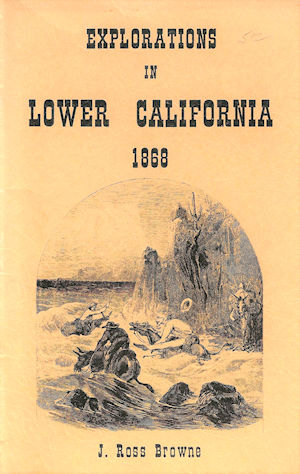
Exploring this possibility, Browne was commissioned by U.S. Department of the Treasury to lead a scientific expedition into Baja California. Aside from the mines at El Triunfo and San Antonio, the U.S Government and members of the expedition knew very little about the peninsula.
In late 1866 Browne and his party took a ship from San Francisco to Cape San Lucas, and in early 1867 traveled by horseback over much of the southern part of the peninsula, to San Jose, San Antonio, Triunfo, La Paz, Todos Santos, and up to Magdalena Bay.
Browne wrote, “On the 28th day of December, accompanied by Mr. Brooks, superintendent of the Triunfo Mines, we took our departure from San Francisco in the Continental, a screw steamer belonging to the Holiday line.” At Cape St. Lucas, he noted, “On rounding the Point of Rocks, we cast anchor about a half mile inside the harbor.” He added, “There is no doubt this point or terminus of the Peninsula would be a valuable acquisition to the United States.”
The group set off with horses and pack mules for (El) Triunfo and Browne was not initially impressed then with what is today’s “Corridor.” He reported, “All around us the country was wild and unattractive, with dry, naked rocks and sand gleaming in the sun...til at last we descried in a distant bend of the shore the green palm trees of San Jose del Cabo.”
At San Jose he reported, “The population of San Jose is about six or seven hundred, nearly all native Californians. Not more than a dozen foreigners live in the place.”
Writing in detail about many segments of the journey, he extolled the beauty of Santa Anita (Just north of today’s Los Cabos Airport). “No prettier spot than Santa Anita exists in Lower California. We were charmed with the tropical appearance of the place.”
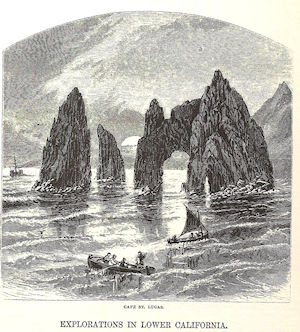
Reaching the gulf, Browne also waxed poetic about the isolated beauty of Baja at night:
“In no part of the world can the nights surpass those of the Gulf region. The sky is beautifully clear; the stars shine with the brilliancy of diamonds; the air is fragrant with the delicate odors of wildflowers; the stillness of death reigns around the camp in these profound solitudes. Tall, silver-gilt cacti stand like giant sentinels on the mystic outlines of the desert, and the very rocks and sands seem clothed with a garniture of celestial light...”
Arriving at San Antonio they were welcomed by the American men who were instrumental in developing the mines there. Yet Browne lamented the lack of progress there and wrote that “The cost of working the ores - which were generally refractory - was too great to leave a margin of profit.”
Triunfo, only five miles distant, was a different story. Arriving there with their shipmate/guide Mr. Brooks, Browne and the scientists found richer gold veins and a new mill, the largest in Lower California at 24 stamps, 16 revolving barrels, and a series of capacious furnaces for chlorination.
Browne noted that as a result of Mr. Brooks’ previous efforts, there was a fine wagon road from the mines down to La Paz, about 45 miles away.
He added, “The town of La Paz is pleasantly situated on an arm of a bay of that name, extending up about twenty miles from the Gulf. The population is about eight hundred; though it is sometimes estimated as high as twelve hundred. Pichilingue, nine miles from the harbor of La Paz, is the principal port at which large vessels usually anchor in order to avoid the passage of the bar.’
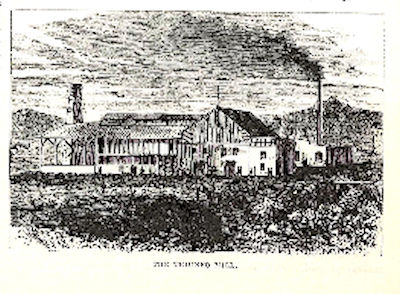
Accompanied by a couple of key members of his entourage, in La Paz Browne presented his credentials and letters of introduction to the Jefe Politico, Governor Pedrin. The wary governor probed about the purpose of the expedition, but was assured the journey was purely scientific.
Arriving in Todos Santos, Browne noted, “An old church, a plaza surrounded by white-washed adobe homes, a scattered collections of hovels roofed with palm, situated on a rise of ground overlooking the valley, constitutes all that is visible of Todos Santos. The population is about 200 - mostly a very poor class of people.
Upon recommendation of the Governor, Browne presented papers of introduction to the “principal citizen Senor Don Villarino, chief owner of the sugar-fields, proprietor of the pack-trains, etc.” Browne added, “Mr. Villarino is the reputed son of a priest...” (Author note: Likely the son of Dominican Padre Gabriel Gonzales who was documented as having fathered numerous children at Todos Santos in the 1820s and 1830s).
The influential Villarino gave the group a cold reception, as he “...does not like the tendency of affairs toward a cessation of the Territory to the United States. He probably thinks it would injure his sugar business...”
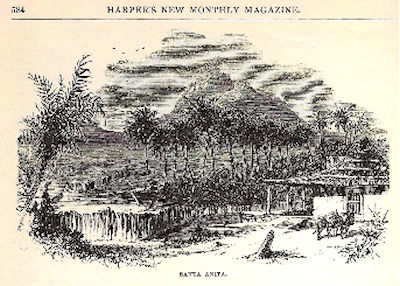
From there they headed north, taking 10 days to reach Magdalena Bay where they encountered some whaling vessels. The whaling captains were hesitant at first, but then helped Browne and his party with their exploration.
Looking at the port possibilities of Magadelena Bay, Browne added, “Thus, we see why no settlement of white people has ever been made upon the shores of this bay. The sterility of the soil and the scarcity of water has proved insuperable obstacles to colonization, even since the careful surveys of DuPetit Thomas and Sir Edward Belcher.”
On their return trip, they made it to La Paz in three days, and thence by ship back to the states.
Browne’s Baja report was very detailed and often included minutiae that took the reader to the scene and made it “come alive.” He listed the “pros and cons “of the areas traveled, and also offered this succinct observation: “It must be apparent, upon a perusal of these sketches, that there are obstacles to the colonization of Lower California. The configuration of the country is such as to preclude the existence of any considerable arable land.”
His resulting records, including some outstanding pen and ink caricatures, were published in three 1868 installments in Harper’s New Monthly Magazine. It was later (1952) released as a booklet Explorations in Lower California. His detailed report has become an excellent record of activity in Baja California Sur during the middle years of the 19th century.
Harper’s Magazine, the oldest general-interest monthly in America, also included the works of American artists and writers such as Stephen A. Douglas, Horace Greeley, Winslow Homer, Frederic Remington, Booth Tarkington, and Mark Twain.
The multi-talented journalist/adventurer Browne was respected by his peers so much that Herman Melville incorporated sections of Browne’s earlier work into Moby Dick and Redburn, and Mark Twain used actual sections of Browne’s writing for Innocents Abroad and Roughing It. About Twain, Browne was pleased and retorted, “That big gun from Hannibal, Mo. had ‘borrowed’ some of my work.”
Browne died in December 1875 in Oakland, CA. Ever the traveler, ill and in his last letter to his daughter Lucy, he remarked, “It is time to hurry to the boat.”
I just used them again Jun 16-19. The best coverage at a great price! I have used Baja Bound...

Easy to purchase and competitive pricing

Was so easy to purchase our insurance from Baja Bound, I am a senior and had no issues at all!